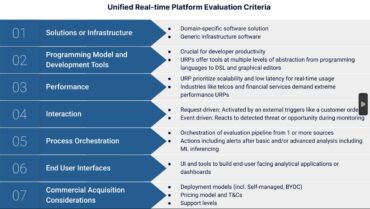
Improving time to value is not just about speeding up production—it’s about creating more responsive, customer-focused, and efficient manufacturing operations that drive growth and success in today’s competitive market landscape.
Time to market has always been a critical measure of a manufacturer’s success. But with fast-changing customer preferences, new regulations in some markets, and other factors, attention is shifting to time to value.
What’s the difference? At a barebones level, time to market is the time it takes for a product to go from initial concept to being available on the market. Time to market efforts often rely on digital technologies to speed up product design, optimize production processes, eliminate supply chain issues, and more.
Time to value loops the customer into the picture. It is a measure of the time it takes for the customer to get value from the product. The challenge today is that the determination of value can often rapidly change. For example, some auto manufacturers are finding that their well-thought-out plans for electric vehicles no longer align with customer interests in particular types of EVs as customer preferences have changed. Similarly, the desire for new features or functionality in the finished product may change greatly from the time of conception to delivering the product into the customer’s hands. Speeding up time to market helps in both cases, but more attention needs to be paid to what customers perceive over time as the value of manufactured goods.
History illustrates the need to focus on time to value
A classic and often cited manufacturing time to-value example is the case of what happened to Firestone Tire & Rubber in the late 1900s. For decades, the company was successful. It knew its customers (the Big Three U.S. automakers). And it knew its competition (other U.S.-based tire manufacturers like Goodyear).
The company’s goal was to keep up with the steadily increasing demand for tires by quickly bringing new production capacity online. But in the early 1970s, French-based Michelin introduced radial tires to the U.S. market. U.S. tire makers knew how successful radial tires were in Europe.
So, Firestone and other U.S. tire makers were prepared to embrace the change. Most rapidly shifted production to radials. Time to market was amazing. Unfortunately, the value part of the equation was overlooked.
In Firestone’s case, it did not redesign its production processes. The issue here is that radial tires require much higher quality standards. That led automakers to look elsewhere and opened the door for competitors to siphon away business.
Another flaw in the plan was that production levels were kept at normal levels. Regrettably, one of the great appeals of radial tires was that they lasted longer (and, hence, did not need to be replaced as often). So, Firestone soon found it had enormous backlogs of unsold products.
Fast forward to today and it is easy to see similar fast changes across the manufacturing industry where it is critical to include time to value thinking in any strategic approach to operations.
See also: The State of Manufacturing 2024: It’s Digital All the Way
Technologies to improve time to value
Like many other aspects of manufacturing planning and operations, the key to investigating time to value is based on data and the insights the data provides.
Several technologies can help manufacturers understand and improve their time to value:
Advanced analytics: By leveraging advanced analytics and big data techniques, manufacturers can analyze large volumes of data collected from various sources, including IoT sensors, production systems, and supply chain networks. These insights help optimize production schedules, identify areas for improvement, and make data-driven decisions to accelerate time to value.
AI and Machine Learning: AI and machine learning algorithms can analyze historical production data to predict equipment failures, optimize maintenance schedules, and improve production forecasting accuracy. These technologies enable manufacturers to proactively address potential issues, minimize downtime, and optimize resource utilization for faster time to value.
Cloud computing: Cloud-based solutions provide manufacturers with scalable computing resources, enabling them to access powerful data analytics tools, collaboration platforms, and enterprise resource planning (ERP) systems without significant upfront investments in hardware or infrastructure. Cloud computing enhances agility, facilitates remote collaboration, and accelerates time to value.
Supply chain visibility platforms: Supply chain visibility platforms leverage technologies like blockchain, IoT, and data analytics to provide real-time insights into the entire supply chain, from raw material sourcing to product delivery. By improving visibility and transparency, manufacturers can mitigate supply chain disruptions, optimize inventory management, and streamline logistics for faster time to value.
Digital twins: Digital twins create virtual replicas of physical assets, such as production equipment and processes, allowing manufacturers to simulate and optimize operations in a virtual environment. By testing different scenarios and configurations, manufacturers can identify bottlenecks, optimize workflows, and improve overall efficiency, leading to faster time to value.
Gaining a competitive edge
By leveraging these technologies, manufacturers can enhance agility, optimize processes, and drive innovation to improve their time to value and gain a competitive edge in the market.
That will give manufacturers a better understanding of how their products are being received in the marketplace. Even great products that were embraced one year might not strike a crowd as customer preferences change. So, while a product may be the result of manufacturing excellence if the customer is not getting the value they are looking for, sales will drop off.
As such, modern manufacturing is dependent on looping the customer into the equation.
Rapid time to value enhances a manufacturer’s ability to respond to changing market conditions, customer preferences, and emerging trends. This agility is vital for staying relevant and maintaining a competitive position in dynamic industries.
In essence, improving time to value is not just about speeding up production—it’s about creating more responsive, customer-focused, and efficient manufacturing operations that drive growth and success in today’s competitive market landscape.










